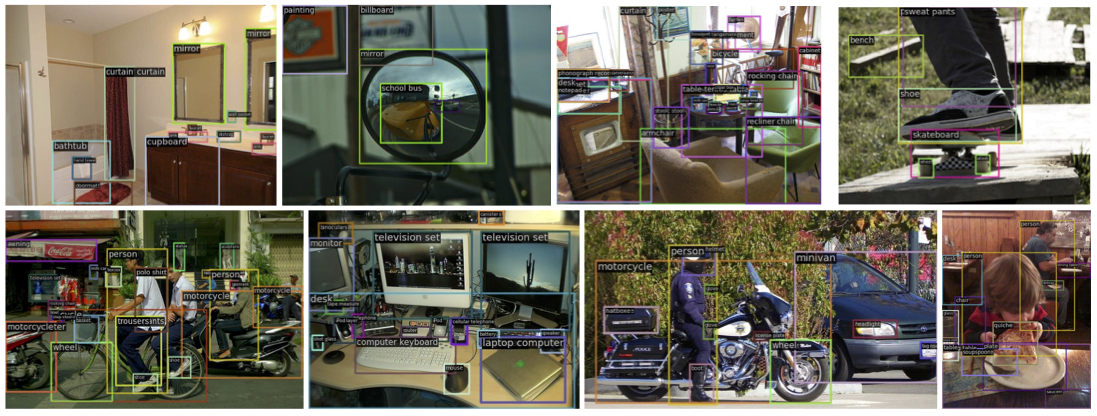YOLO-World is a state-of-the-art real-time object detection model that leverages the power of open-vocabulary learning to recognize and localize a wide range of objects in images.
We strongly recommend using a virtual environment. If you're not sure where to start, we offer a tutorial here.
pip install ikomiafrom ikomia.dataprocess.workflow import Workflow
from ikomia.utils.displayIO import display
# Init your workflow
wf = Workflow()
# Add algorithm
algo = wf.add_task(name="infer_yolo_world", auto_connect=True)
# Run on your image
wf.run_on(url="https://images.pexels.com/photos/745045/pexels-photo-745045.jpeg?cs=srgb&dl=pexels-helena-lopes-745045.jpg&fm=jpg&w=1280&h=869")
# Display your image
display(algo.get_image_with_graphics())Ikomia Studio offers a friendly UI with the same features as the API.
- If you haven't started using Ikomia Studio yet, download and install it from this page.
- For additional guidance on getting started with Ikomia Studio, check out this blog post.
- model_name (str) - default 'yolo_world_m': Name of the YOLO_WORLD pre-trained model. Other model available:
- yolo_world_s
- yolo_world_v2_s
- yolo_world_m
- yolo_world_v2_m
- yolo_world_l
- yolo_world_v2_l
- yolo_world_l_plus
- yolo_world_v2_l_plus
- yolo_world_l_x
- yolo_world_v2_l_x
- conf_thres (float) default '0.1': Box threshold for the prediction [0,1].
- iou_thres (float) - default '0.25': Intersection over Union, degree of overlap between two boxes [0,1].
- max_dets (int) - default '100': The maximum number of bounding boxes that can be retained across all classes after NMS (Non-Maximum Suppression). This parameter limits the total number of detections returned by the model, ensuring that only the most confident detections are retained.
- cuda (bool): If True, CUDA-based inference (GPU). If False, run on CPU. If using a custom model:
- model_weight_file (str, optional): Path to model weights file .pth.
- config_file (str, optional): Path to model config file .py.
Parameters should be in strings format when added to the dictionary.
from ikomia.dataprocess.workflow import Workflow
from ikomia.utils.displayIO import display
# Init your workflow
wf = Workflow()
# Add algorithm
algo = wf.add_task(name="infer_yolo_world", auto_connect=True)
algo.set_parameters({
"model_name": "yolo_world_m",
"prompt": "person, dog, cup",
"max_dets": "100",
"conf_thres": "0.07"
})
# Run on your image
wf.run_on(url="https://images.pexels.com/photos/745045/pexels-photo-745045.jpeg?cs=srgb&dl=pexels-helena-lopes-745045.jpg&fm=jpg&w=1280&h=869")
# Display your image
display(algo.get_image_with_graphics())Every algorithm produces specific outputs, yet they can be explored them the same way using the Ikomia API. For a more in-depth understanding of managing algorithm outputs, please refer to the documentation.
from ikomia.dataprocess.workflow import Workflow
# Init your workflow
wf = Workflow()
# Add algorithm
algo = wf.add_task(name="infer_yolo_world", auto_connect=True)
# Run on your image
wf.run_on(url="https://images.pexels.com/photos/745045/pexels-photo-745045.jpeg?cs=srgb&dl=pexels-helena-lopes-745045.jpg&fm=jpg&w=1280&h=869")
# Iterate over outputs
for output in algo.get_outputs():
# Print information
print(output)
# Export it to JSON
output.to_json()





